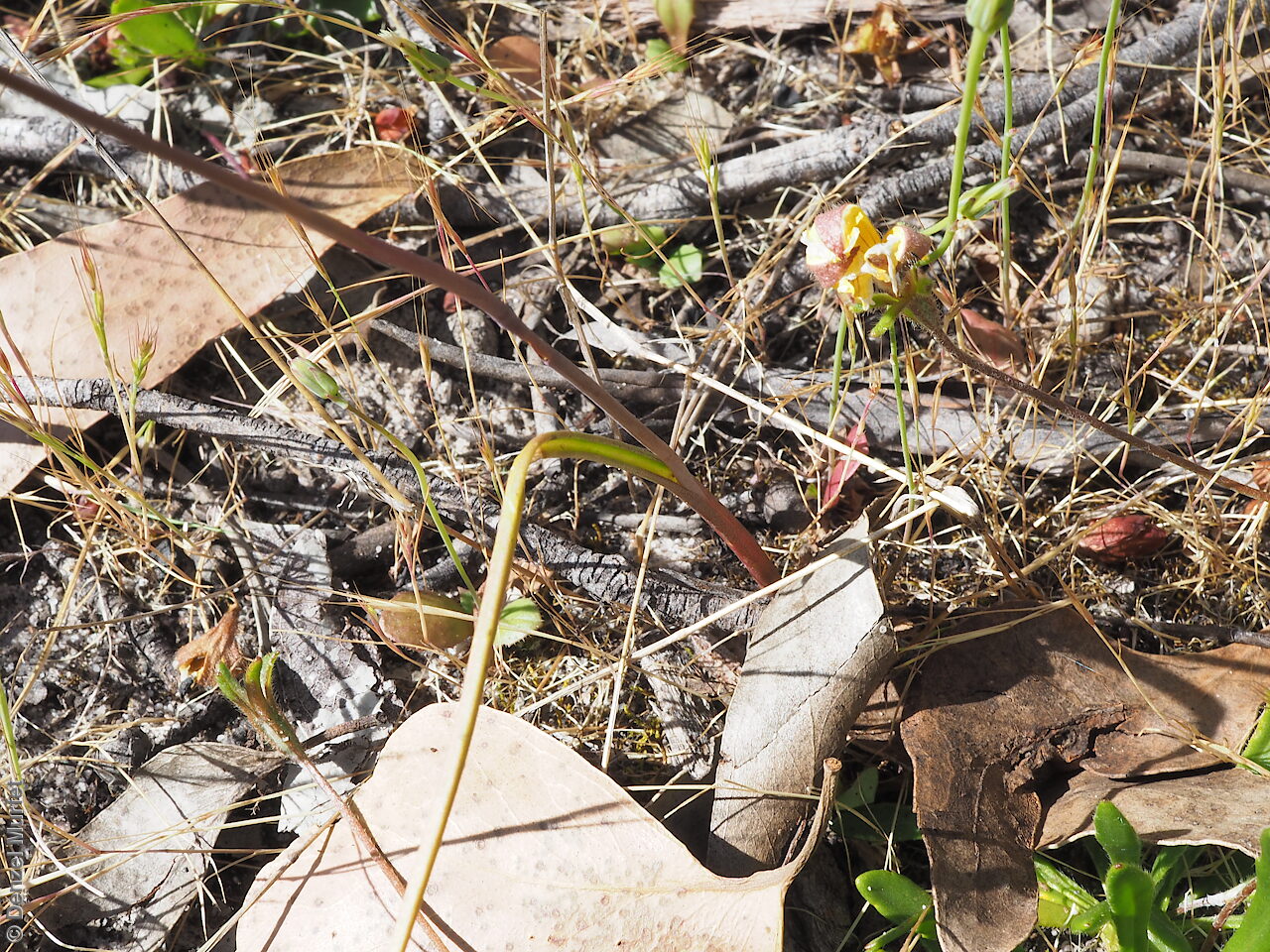







Prior names
Thelymitra sp. Black buds (R.J.Bates 64389)
Thelymitra sp. Dark buds (R.J.Bates 64416)
Etymology
Thelymitra from Greek 'thelys' meaning a bishop and 'mitra' meaning a headwear, hat, hence a bishop�s mitre, referring to the sometimes plumed or decorated wings of the column, which is usually produced behind and over the anther in a hood-like projection. Crenulata from the Latin 'crenatus' meaning small rounded teeth, referring to the crenulated or crinkled surface of the post-anther lobe.
Distribution and status
Endemic to South Australia and found in a small area in the lower South-east around Mount Gambier, growing in open aspect in damp sandy heath near waterholes. Native. Very rare in South Australia.
Herbarium region: South Eastern
NRM region: South East
AVH map: SA distribution map (external link)
Plant description
Glabrous terrestrial orchid to 30 cm high. Leaves erect, linear, to 20 cm long and 3 mm wide, fleshy, green with a purplish base or wholly purplish. Flowers 1 to 7 deep blue with 8-10 strong, linear dark lines. Flowering between October and November. Fruits are pale brown obovoid capsule to 10 mm long and 5 mm wide, ribbed.
Seed collection and propagation
Collect fat capsules as they start to dry and turn brown. Pods will split and release the seeds quickly and will require monitoring. To increase the chances of collecting mature pods, it is recommended that a small breathable bag (ie. Organza bags) be used to enclose the developing capsules. Place the capsules in a container that will hold fine seeds and leave to dry for a few weeks or until the capsule split. Then carefully hold the capsule and tap it gently to release the seeds. Store the seeds with a desiccant such as dried silica beads or dry rice, in an air tight container in a cool and dry place or in liquid nitrogen.